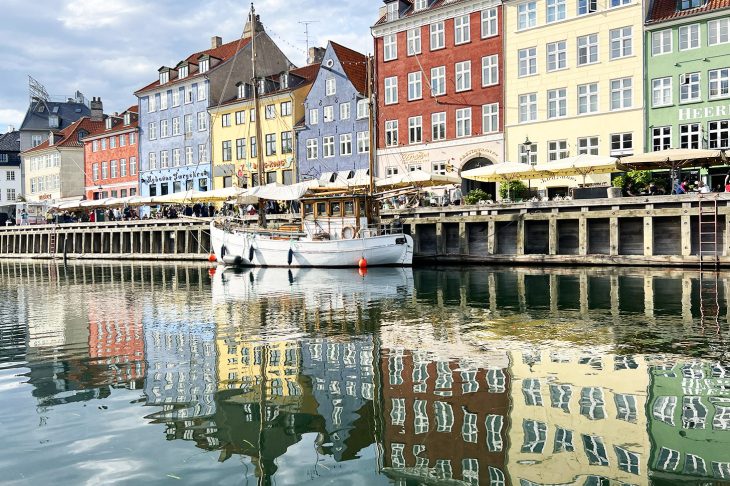
Is the Beamish Museum worth a visit?
Have you ever visited the Beamish Living Museum of the North? No? Have you even heard of it? OK, I’ll be absolutely honest with you. Neither had I, until I started putting together the itinerary for our trip up North. It is a museum (this much you can gather from the name I guess), but what is so special about it? And is the Beamish Museum worth a visit (I pretend) I hear you say? Glad you asked. Let me tell you all about our visit to the Beamish Living Museum of the North and whether we thought the Beamish Museum was worth the visit or not.
When preparing for our recent trip to Sunderland, I had a look what was around and what we should include in our itinerary. And one place that came up repeatedly was the Beamish Living Museum of the North. So, we decided to book tickets and make a day of it. If you are thinking about a trip to Northeast England (or are living in the vicinity and have never been), let me tell you, why you should include Beamish Museum in your itinerary and if Beamish Museum is worth a visit.
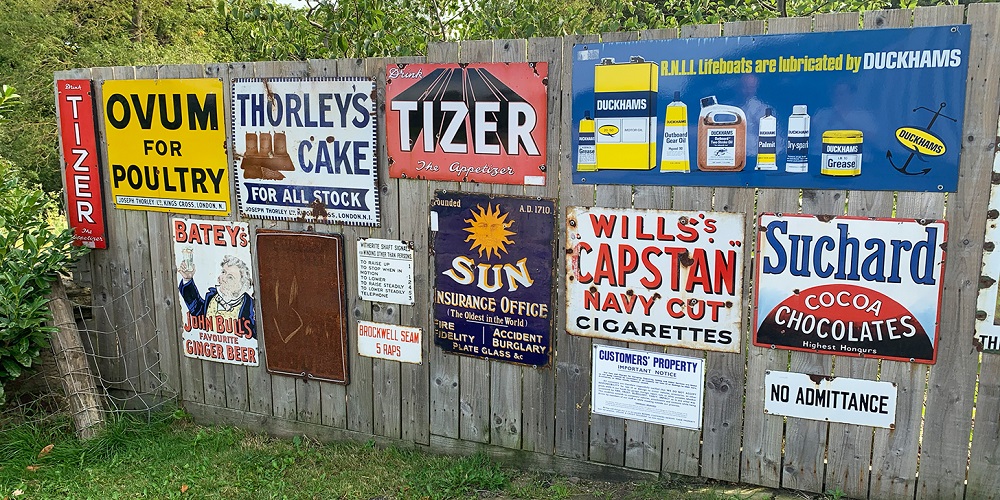
I will do my best to cover the most frequently asked questions about the Beamish Living Museum of the North along with telling you all about our visit to the museum and how you should prepare for a day trip to Beamish Museum.
So, if you ever wondered what the Beamish Museum of the North is all about, how to get there, how much time you should allow for a visit to Beamish Museum, how much money it will cost you and most importantly, whether Beamish Museum is worth a visit or not, you’ve come to the right place. I’ll try to answer all your questions about the Beamish Living Museum of the North.
What is the Beamish Living Museum of the North?
Beamish Museum is an open-air museum, dedicated to preserving rural everyday life in the North of England at the height of the industrialisation and beyond.
It is located in County Durham, near the village of Stanley and about a 30-minute drive from both Newcastle upon Tyne and Sunderland. So, if you are staying in the Tyne and Wear region, Beamish Museum might be well worth a visit.
Beamish Museum was first opened in 1972, but collection of the exhibits started almost 15 years earlier.
The museum gives visitors the chance to experience rural life from the 1820s to the 1950s with a mix of farm buildings, private houses, shops and even a coal mine.
The buildings are either replicas of the age or were dissembled at their original location and re-built here at Beamish. Which gives it a very authentic feel. Rather than a massive stage set. And to finish off the authentic look and feel, the staff working at the Beamish Museum are all in costumes of the time (depending on the area they work in).
How to get to the Beamish Living Museum of the North?
The easiest way to get to Beamish Museum is probably by car, as it is a little in the middle of nowhere. Parking at the museum is free and there are plenty of parking spaces.
But you could also use public transport. There are regular busses running from Newcastle and Sunderland. Or you could take the train. The nearest station to Beamish Museum is Chester-le-Street. From there you can then take a bus to Beamish Museum.
Another option is getting there by bike. The Beamish Museum is conveniently located on Cycle Route 7 (also known as C2C coast to coast cycle route). Bike racks are available outside the entrance building, so securing bikes shouldn’t be a problem.
We originally considered taking the bikes from Sunderland (which would have been about 15 miles / 24 km one way), but since I was far too lazy that morning, we finally settled on the car.

How much money do I need for a visit to Beamish Museum?
Tickets for adults are £19.50, £11.50 for children. But once you’ve purchased a ticket, this is actually valid for an entire year and you can re-visit as often as you like. Which makes it a bargain if you live in the vicinity or visit the area regularly.
Just note, that in addition to your ticket, you currently need to book a time slot for entering the museum grounds (this is free of charge but needs to be done before arrival).
Whilst in the Beamish Museum, you don’t necessarily need any additional money. All exhibits are free and so is the local transport (they have busses and trams connecting the different areas, in case you don’t want or can’t walk it all).
We did spend some extra money on snacks and drinks for lunch, ice-cream in the afternoon and a few treats from the sweet shop. But the prices were reasonable. Not overly expensive (I hate it, when you visit a place and they charge you £5 for a bottle of water. Luckily this wasn’t the case here).
It is absolutely fine to bring your own food and drink with you, so if you are visiting as a family, why not pack a little picnic, if you’d like to keep your costs down.
How much time should I allow for a visit to the Beamish Museum?
Well, it probably depends. If you live in the vicinity and have the chance to head to the museum on a regular basis, you will probably spend less time per visit. But if you only go there once and you buy a ticket, you probably want to make sure that the Beamish Museum is worth the visit and the money spent.
To give you some idea, we spent approx. four hours at the Beamish Museum. That was enough time for us to walk the length and width of the grounds, visit all the different areas and have a little sit down over lunch. Obviously, if you are a slow walker, you might need a little longer.
Whilst we are on the topic of walking. Just to get an idea of how much ground we covered, we tracked it on our fitness watch. And it turned out that we walked almost 8km (5 miles) throughout the visit. So, I would definitely recommend you wear comfy shoes and practical clothing.
The museum is open from daily 10 till 5, so if you book yourself an early time slot, you can spend the entire day there, if you fancy.
Is it safe to visit the Beamish Museum during the pandemic?
Since the Beamish Museum is mostly outdoors, it is probably safer to visit than some other museums and venues. And thanks to it being a rather large area, staying clear of others is easy.
To manage crowds, you can’t just show up on the door, but will have to book a specific time slot before arriving (but don’t worry, this is just to manage queues at the entrance. It does not limit the time you can spend at the museum).
They have obviously put certain measures in place, to ensure everyone is as safe as possible. Not all exhibits are open to the public at the moment. And the ones that are, have a one-way system in place and hand sanitisers available at entrances. Also, unfortunately, the tram isn’t yet running again. The only form of transport available is the bus. And I guess that probably operates with a limited capacity, which would certainly explain the queues at all stations (yes, you can probably guess that we did not actually use the busses whilst at Beamish Museum).
Visiting the Beamish Museum: The different areas
OK, now that we have answered some of the common questions about a visit to the Beamish Living Museum of the North, how about I show you a little glimpse of the different areas? So that you can decide for yourself, whether Beamish Museum is worth a visit or not.
You can obviously visit the different areas in any order you’d like. And we did visit them in a bit of a random order. Rather than showing them in chronological order, I just stick to the order we saw them.
The Regional Resource Centre
Our first stop of the day were the tram and bus depot. Beamish has a selection of restored old trams and busses, that are operating a circular route through the grounds. The trams weren’t running when we visited, so we could only see them cooped up in their depot instead. But I guess it would have been good fun to actually have a ride on them. Maybe next time.
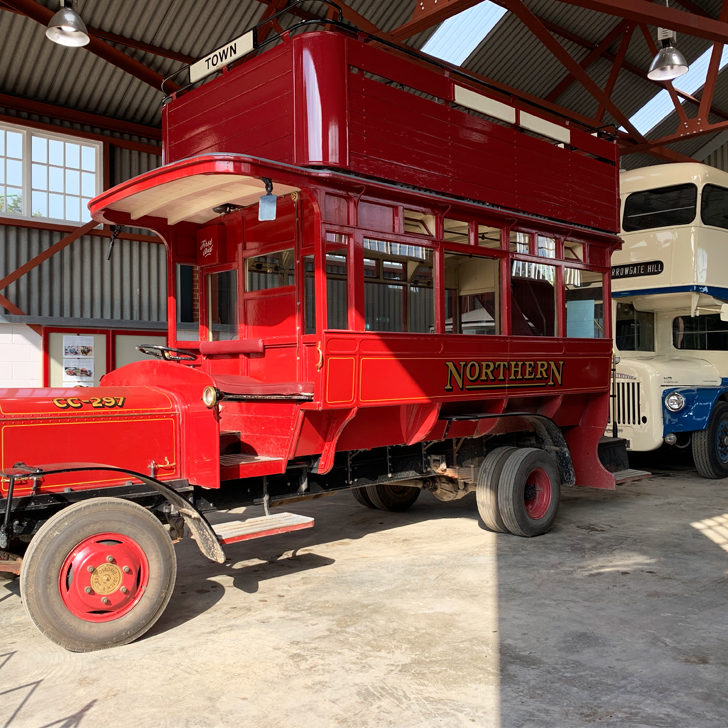
1940s Farm
Next on our route was the 1940s farm. Unfortunately, this one was also closed, so we could only view it from the outside. There’s the old farmhouse, the kitchen, a few cottages and some livestock (chicken and sheep).
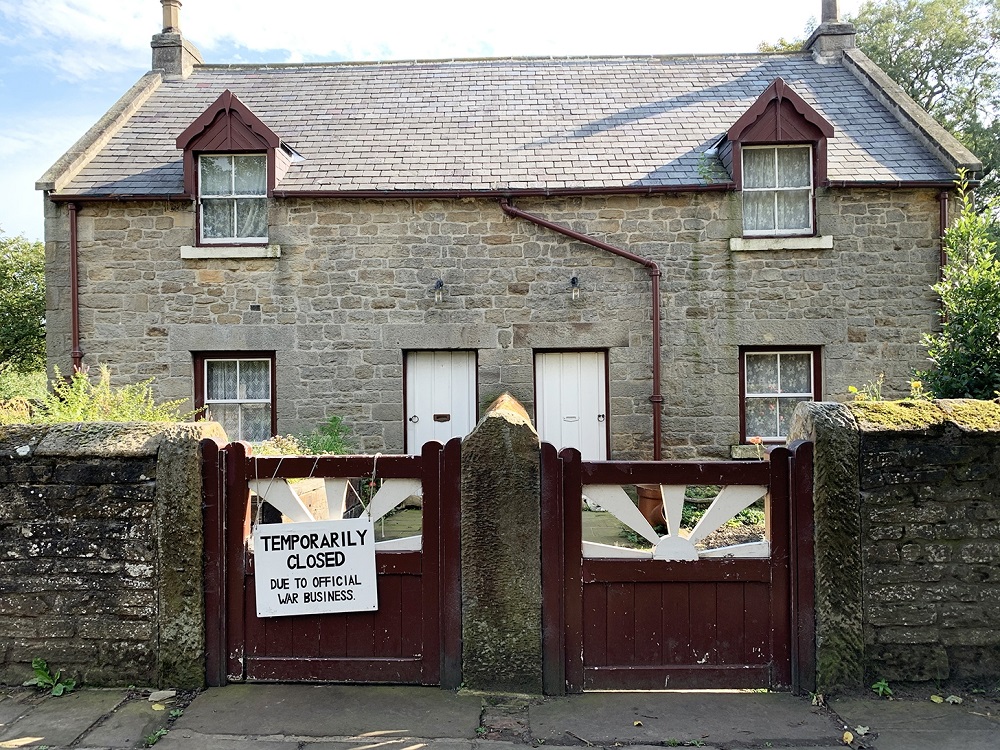
1900s Pit Village
Glad to say, that in the pit village almost everything was open. Coming down to the village, we started with the band hall, followed by the school, chapel and the pit cottages.
The six cottages were originally built in the1860s and were moved to the Beamish Museum in the 1970s. So, they are real houses, not replicas. We weren’t able to actually enter the cottages, but the front and back doors were open, so that we could have a glance in.
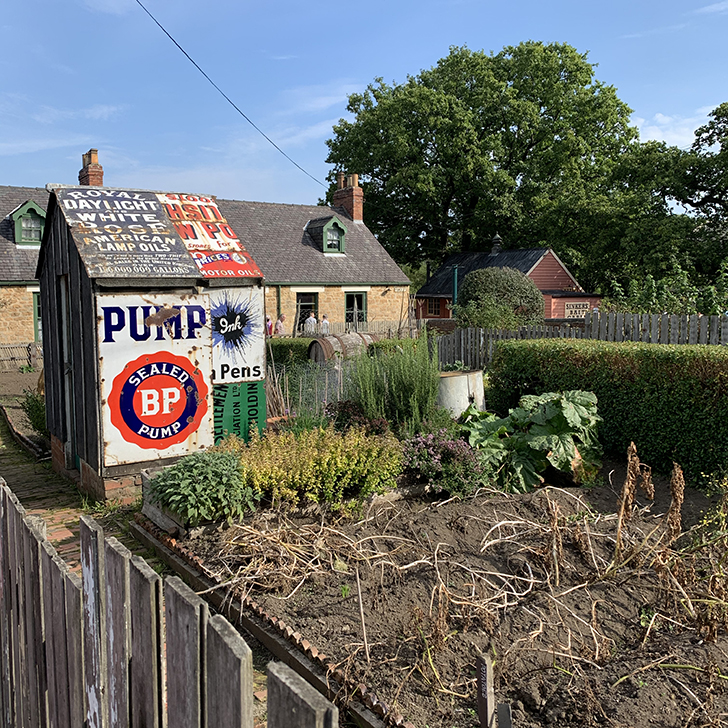
At the Sinkers Bait Cabin, we had a short sit down and some snacks for lunch (alternatively there would have been Davy’s Fish&Chips Shop).
Next up was the 1900s Colliery
We went around to see the old engines in the engine shed, learn about the different safety lamps in the lamp cabin and see the heapstead and winding engine house (both original buildings relocated from the nearby Chophill Colliery).
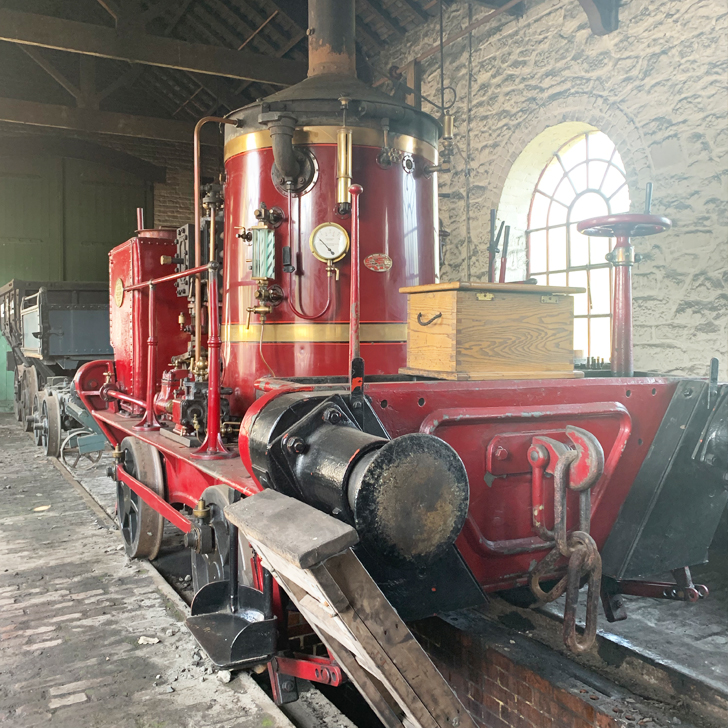
The Mahagony Drift Mine is still in its original location and was in use here from around 1850 to 1920. It was unfortunately closed at the time of our visit, but under normal circumstances you could take a tour down the mine and learn how it was working under ground.
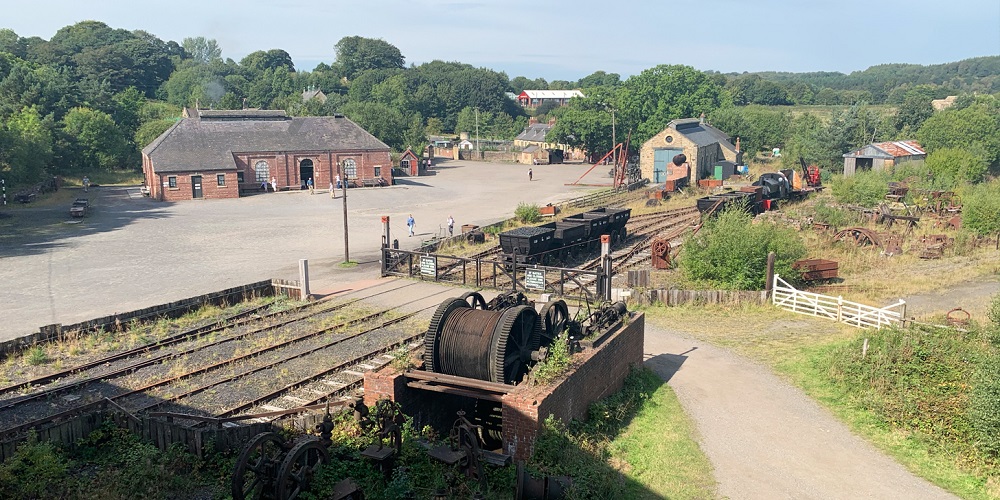
The 1820s Pockerley
Done with the 1900s, we went back in time and headed to the 1820s. The Pockerley waggonway was closed and the steam trains weren’t running, so we could only peek a glimpse from the outside.
Walking through the Georgian landscape, we came past the old quilter’s cottage, and St. Helen’s Church. This medieval church was originally located near Middlesbrough and was saved from demolition by relocating it to Beamish.
Visit Pockerley Old Hall to see how tenants lived in the 1820s. And don’t forget to visit the beautiful terraced gardens with planting of the time.

The 1820s area is work in progress, with an inn under construction. Once this is opened, the plan is to offer overnight accommodation, potentially making your visit to Beamish Museum even more worth it.
1950s Town
This is another big new project for Beamish. So far, there is only the welfare hall completed yet (which conveniently sold ice cream and snacks, so we made a brief stop here). But once completed, the 1950s town will feature terraced houses, shops (including a toy shop), hairdressers, a cinema and a bowling green.
1900s Town
To me, this was actually the most interesting area of them all (and also the liveliest). The 1900s town (set in 1913 to be precise) features a high street with a range of shops, a pub and some terraced houses of the time.
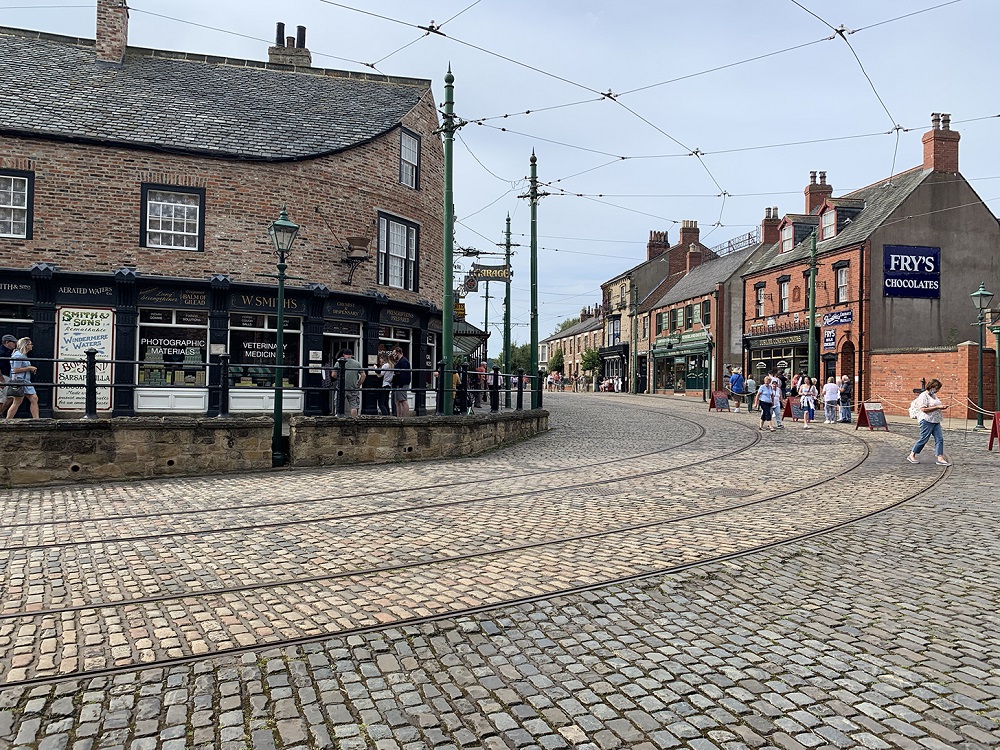
We bought some sweets at the sweet shop, had a browse through the department store and the chemist. At the moment, the photographer’s studio is closed, so we weren’t able to have our pictures taken in period costumes (for sure something to remember your Beamish Museum visit by for years to come).
If you’ve watched Downton Abbey (the movie, not the series) you might recognise the Motor Garage as the place were Branson works. Actually, it is not just the Motor Garage that was used as a filming location for Downton Abbey (and other films), but the entire high street.
The fairground was unfortunately completely closed at the time of our visit, so we didn’t even bother going there.
Rowley Station
Our last stop of the day was Rowley Station. An original building, the station was relocated from Rowley, just a few miles from Beamish. The Rowley steam train wasn’t running, so there wasn’t much to do other than have a walk around and look at the old buildings.
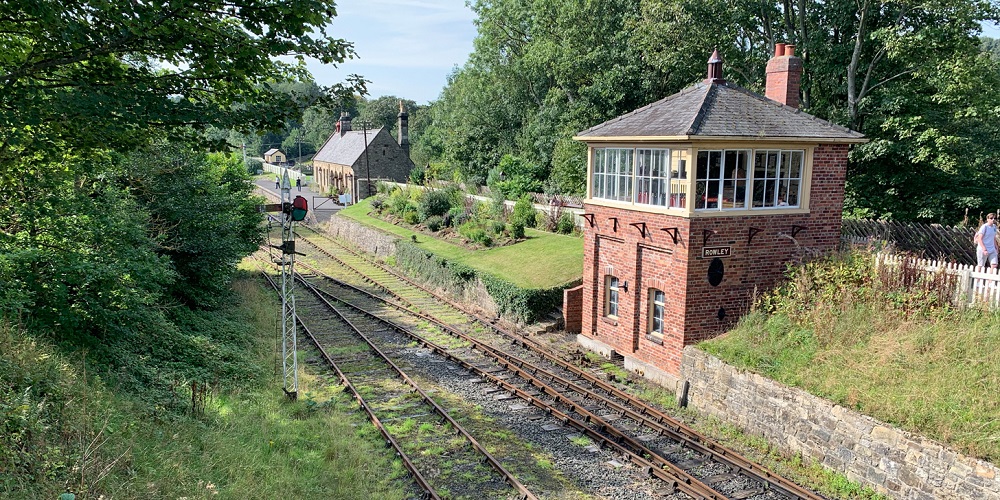
So, now that I’ve showed you the different areas at the Beamish Living Museum of the North, it is time to answer the ultimate question. Is the Beamish Museum worth a visit or not?
Well, sorry to say, this is something you will have to answer for yourself. But my answer would be yes, Beamish is worth a visit. It is a fun day out and it gives you a glimpse of past lives. I am no stranger to old buildings (having grown up in a house that dates back to 1709), but I always find it very interesting to see how different live would have been back then. And not just all that time back, but even at the start of the 20th century. We take so many things for granted today, that weren’t even heard of 100 years ago.

